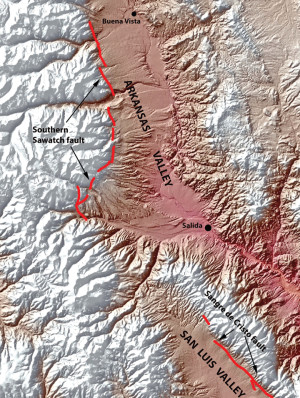by Kenneth Jessen
Most politics today are comprised of attack ads, but in the past, politics were downright dirty. Leave it to Colorado to raise the bar and do something unprecedented in United States history by having three different governors in one single day! The November 1904 election was so intense that few Coloradans paid attention to the presidential election with its heated contest between Theodore Roosevelt and his challenger, Alton Parker.
This corrupted 1904 election may have started when the Denver police chief instructed several hundred prostitutes, saloon keepers, ex-convicts and gamblers how to become “repeaters.” In exchange, the chief promised “protection” against arrest for their nefarious activities. A “repeater” was paid to go from one Denver precinct to another and cast votes along party lines. This activity was sponsored by the Democratic Party with designs to get former Gov. Alva Adams re-elected. He was running against the incumbent Republican, James H. Peabody.
As the Democrats were busy stuffing Denver ballot boxes, the Republicans were scheming to steal the election in south-central coal-mining towns with a strategy of intimidation. Mine owners threatened that if a miner voted for the Democratic candidate, he would be fired. This implied that the sacred concept of a secret ballot was thrown out the window. The miners also were threatened with lockouts from their jobs. During the previous administration, the Republicans had conspired with mine owners to squash efforts by the miners to unionize, something that would have lowered profits and potentially shut down the mines.
Back in Denver, the “repeaters” resorted to going back to previous polling places in disguises allowing them to continue to stuff the ballot boxes. The day after the election, the police chief drove the “repeaters” out of town to prevent any negative testimony. So much for the promise of protection from the law.
The end result of the 1904 election was 123,092 votes for Democrat Alva Adams and 113,754 votes for the incumbent Republican Gov. Peabody. Peabody immediately protested the election results. A joint session of the state legislature was called to resolve the issue. Chaos erupted throughout Colorado politics, and even the Republicans did not stand united as to who should be crowned governor.
[InContentAdTwo]
One telling problem was that several Supreme Court justices needed to be appointed, and whoever was elected could slant future judicial decisions in favor of their party. The Republicans agreed to withdraw their protest over the election results only if incumbent Peabody could appoint the new justices before he left office. As a result, Democrat Alva Adams was inaugurated on Jan. 10, 1905. The matter should have ended at this point, but Peabody was clearly a sore loser. Peabody filed yet another protest two days later with the Colorado secretary of state.
On Jan. 18, 1905, Republican Lt. Gov. Jesse McDonald appointed a 27-member committee to decide on who actually won the election. The corruption on both sides could not be hidden as 2,000 witnesses paraded in front of the committee. It resulted in a record 180,000 pages of finger-pointing testimony.
During this process, one particular incident involved Juan Montez, the election clerk for Huerfano County, where many of the coal-mining towns were located. The Democrats accused the Republicans of casting a large number of fraudulent votes, and Montez was summoned to appear before the committee with the ballot box from Precinct No. 23. He failed to comply with this court order and was found in contempt. Arrested in Denver, Montez was forced to return to Walsenburg to get the ballot box. He knew he would be in deep trouble if the box was opened and jumped from a moving train and hid under the 16th Street viaduct. The police found him and deposited him on another southbound train.
Montez returned to Denver with the ballot box, and when it was opened in front of the committee, it was empty. It did not even contain the required election log and apparently had not even been used during the election. As the committee suspected, the officials of Colorado Fuel & Iron had determined in advance that Peabody had won the precinct and filled in the number of votes to be reported to election officials.
It was virtually impossible for the committee to determine who won the 1904 election. To resolve the issue, a curious scheme was worked out. On March 16, James Peabody was given the oath of office by Colorado’s Chief Justice, but only after promising to immediately resign. Alva Adams, with the majority of votes – legitimate or not – held the position of Colorado governor during the early part of the day. In a confusing sequence of events, when Peabody was given the oath of office, Adams was essentially unseated. After five minutes, Peabody resigned leaving the office to Lt. Gov. Jesse McDonald. McDonald was sworn in as Colorado’s sixteenth governor. Both Peabody and Adams were bitter over the outcome and made strong statements to the effect that they had been made into sacrificial lambs by their respective parties.
Kenneth Jessen is a Loveland author of many books continues to be fascinated by the bizarre and unusual aspects of Colorado history and goes out of his way when it involves less than reputable politicians! To this he says that there is plenty to write about!


